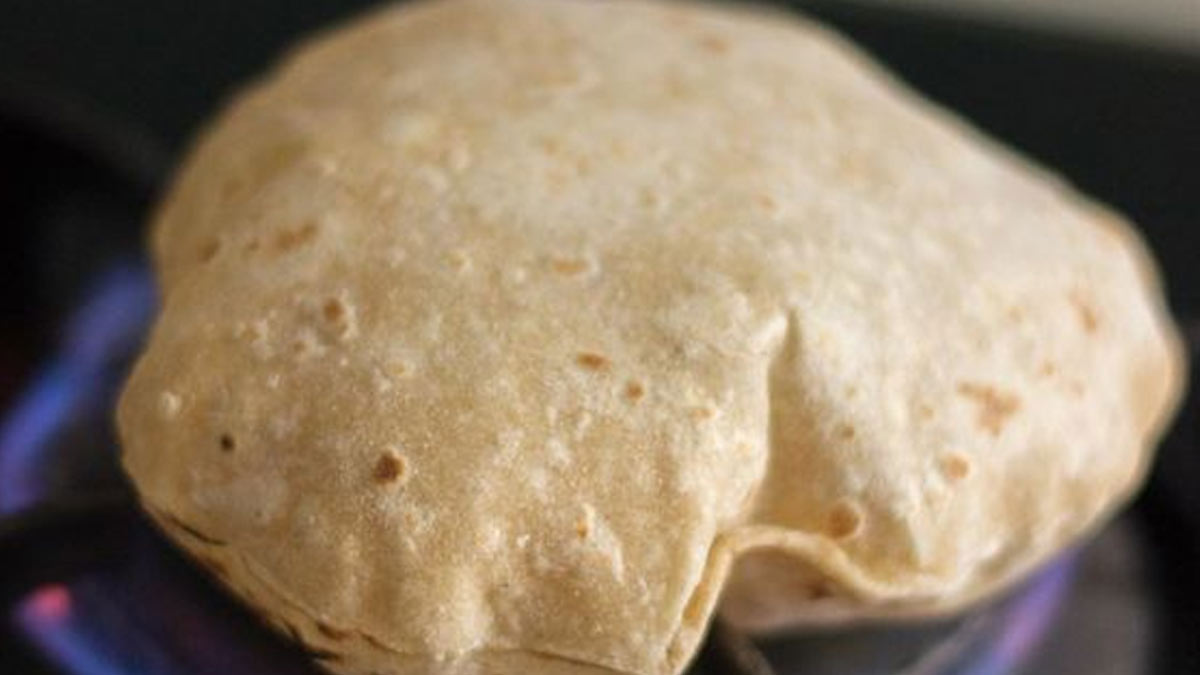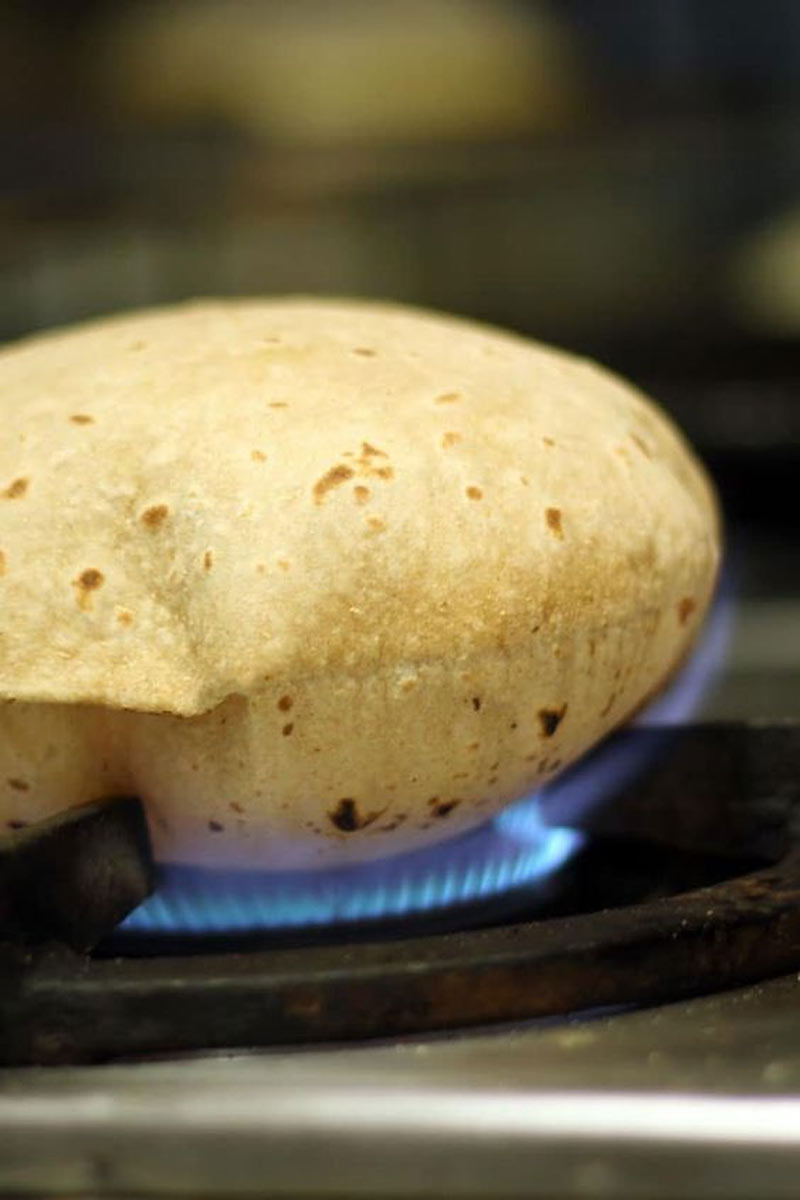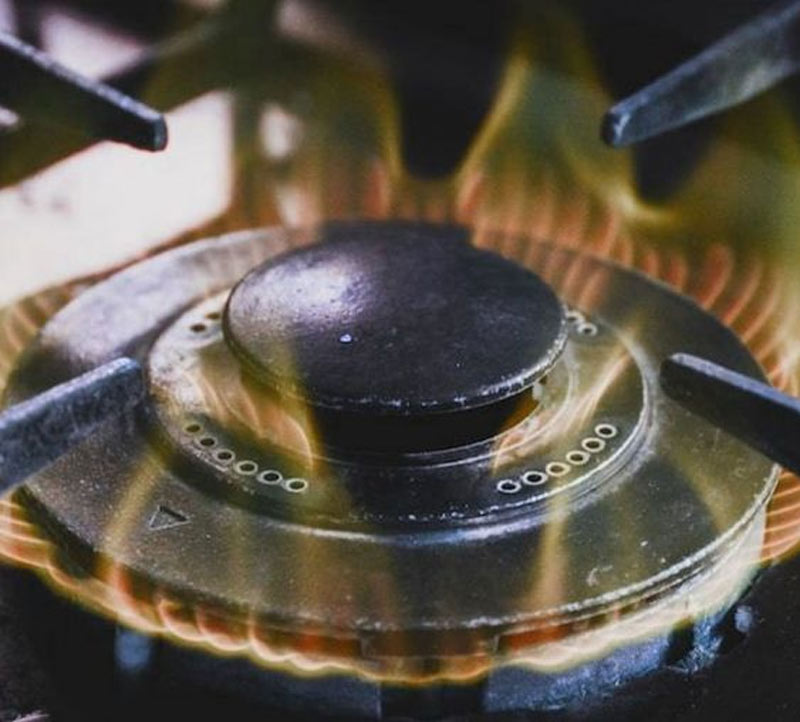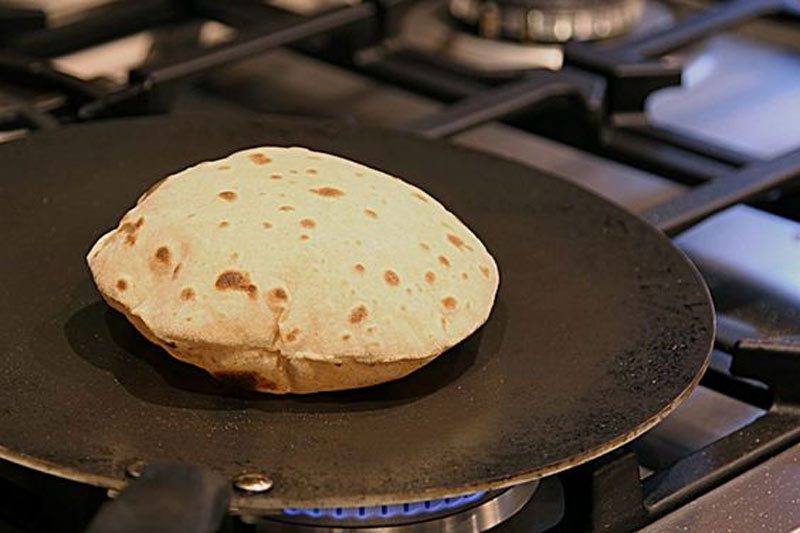
Childhood was beautiful when I would sit on the kitchen platform as I couldn’t see what mumma was cooking because of my little height. I would irritate mom a lot when she would prepare rotis by rolling the dough and playing with it, eating it raw but as soon as mom would lift the tawa and put roti on the gas flame, it would puff up like a balloon and my eyes would go wide with it. I clapped at the sight of the bulging of chapati. Cut to today when I’m having a few moments of one of my chapatis puffing up like a balloon after I’ve burnt nearly all chapatis, they say making chapatis on direct flame is dangerous for health? Now what do I do with this skill of learning to make a chapati puff up.
Table of Content:-
The tradition of making rotis on direct gas flame is long followed in India. But is it true that making chapatis on direct gas flame is dangerous for health. Studies have also shown that it can even cause cancer. Let’s not go there and scare the heck out of ourselves. First let us get the clarity over whether this is a myth or truth.

To get a better understanding on this, OnlyMyHealth team interacted with Dr Rajeshwari Panda, HOD - Nutrition and Dietetics Department, Medicover Hospitals, Navi Mumbai.
Dr Panda said, “Making chapatis (also known as rotis) directly on a gas flame is a common practice in many households, especially in South Asian cuisine. However, whether it is dangerous for health or not depends on various factors.”
Dr Panda without being biassed said, “Let's explore both sides,” and helped us list down the myths and Truth of making chapatis directly on gas flame.

Myth
Traditional Method
Chapatis have been cooked directly on gas flames for generations without significant reported health issues. It's a traditional method that has been widely used without widespread health concerns.
Short Cooking Time
Chapatis are cooked relatively quickly on a high flame, which may not allow for significant harmful compounds to form.
Hygiene Practices
If proper hygiene practices are followed, such as using clean utensils, washing hands before cooking, and ensuring the dough is fresh, the risk of health hazards is minimised.

Now ladies and gentlemen, let’s pull some curtains off the truth. Let’s see what Dr panda talks about the harmful effects of making chapatis on direct gas flame.
Truth
Formation of Harmful Compounds
According to Dr Panda, Cooking chapatis directly on a gas flame can lead to the formation of harmful compounds such as polycyclic aromatic hydrocarbons (PAHs) and acrylamide. These compounds are known to be carcinogenic and may pose health risks if consumed in significant amounts over time.
Incomplete Cooking
Inadequately cooked chapatis may harbour harmful bacteria or pathogens, leading to foodborne illnesses.
Exposure to Carbon Monoxide
Cooking on an open gas flame can lead to the release of carbon monoxide, which in poorly ventilated areas can pose health risks.
Recommendations
Dr Panda helped us with some recommendations on how to make chapatis to stay safe from the bacteria and other harmful compounds.

Alternatives: Consider using a tawa (flat griddle) or a non-stick pan to cook chapatis. This method allows for the same texture and taste without direct exposure to the flame.
Ventilation: Ensure proper ventilation in the kitchen area to minimise exposure to any harmful gases released during cooking.
Cooking Time and Temperature: Adjust the flame intensity and cooking time to minimise the formation of harmful compounds while ensuring the chapatis are adequately cooked.
Hygiene: Maintain good hygiene practices during food preparation to minimise the risk of foodborne illnesses.
Also read: Nurturing Healthy Habits: Expert Tips to Encourage Your Child To Eat Nutritious Meals
Conclusion
Concluding, Dr Panda said, “While cooking chapatis directly on a gas flame is a traditional method, it's essential to consider potential health risks associated with it. By following proper cooking techniques, hygiene practices, and considering alternatives, you can enjoy chapatis while minimising potential health hazards.”
Also watch this video
How we keep this article up to date:
We work with experts and keep a close eye on the latest in health and wellness. Whenever there is a new research or helpful information, we update our articles with accurate and useful advice.
Current Version
